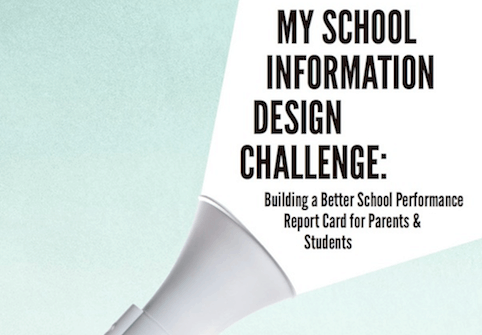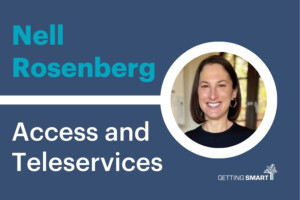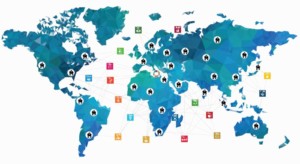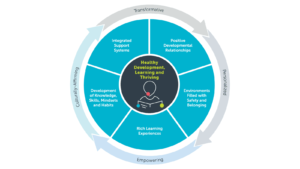Making a Market: Demand Development & Aggregation in K-12

In healthy markets buyers have good information about good choices. Suppliers in healthy markets have low barriers to entry, receive clear demand signals and aligned incentives; they invest in research and development (R&D) and produce new innovations. Capital investments bring productivity to scale. Customers benefit from better products/services at lower prices.
In underdeveloped or inefficient markets, like K-12 education, customers have few choices often controlled by bureaucratic mechanisms. Suppliers face barriers to entry; weak demand signals reduce investment in R&D.
Prizes and pull mechanisms can help address inefficient markets. In addition to policies that level the playing field and inducement prizes that encourage breakthroughs, market development activities can aggregate demand and improve vendor and investor signaling.
There are six demand aggregation mechanisms that are helping build markets, spur investment, and improve access to better products/services.
- Purchasing cooperatives
- School networks
- Online services
- Sector standards
- Design and inducement prizes
- Market signaling
1. Purchasing co-ops
States and intermediate units provide a variety of purchasing services:
- K12Indiana provides cooperative purchasing on a wide variety of products including IT equipment, paper, furniture, and office supplies. Indiana intermediate units provide bus purchasing and substitute teacher cooperative.
- E&I is an 80-year-old non-profit purchasing cooperative serving HigherEd and K-12.
- The Wisconsin Association for Public Procurement publishes a list of regional cooperatives.
2. School networks
School networks that share a similar model create aggregated demand for platform, tools, professional development services. Three examples include:
- New Tech Network provides a platform and aligned content, services, and convenings to 200 schools.
- NAF provides academic structure, curriculum, and student learning certification services to 667 career academies.
- The League of Innovative Schools, an initiative of Digital Promise, is a national coalition of 73 public school districts and education agencies in 33 states that collectively serve nearly three million students. The League’s market development activities include efforts to break down silos, scale innovation, and transform the market by streamlining procurement, aligning supply and demand and focusing the decisions of purchasers.
3. Online services
New services help buyers identify the right products/services for them:
- Noodle Markets is an online marketplace designed to transform the way K-12 educational institutions buy products and services by leveling the playing field for vendors, improving processes, and spurring innovation. It is a market characterized by legions of products and thousands of poorly informed buyers. Noodle Markets is an attempt to bridge the EdTech purchasing information gap (see feature).
- EdSurge Concierge helps districts clarify purchasing objectives, invite proposals, evaluate options, and gain introductions.
4. Sector standards
In his book The Box, Marc Levinson described how setting standards for shipping containers dramatically improved global trade. Sector standards can address bottlenecks or problems that make markets inefficient. EdTech examples from 2015 include:
- In February, SIIA released a privacy pledge signed by more than 100 EdTech vendors agreeing to protect student data privacy.
- In September, nonprofit IMS Global Learning Consortium announced the creation of the K-12 Open Tech Ecosystem Initiative.
5. Design and inducement prizes
Prizes can be used to create inducements for innovation. They are particularly useful when the solution path isn’t clear and when surfacing global talent may be helpful. Prizes signal the path forward and can be used to breakthrough traditional roadblocks to progress.
- A design prize provides awards for the submissions judged the best by an expert panel and/or public judging. Even with small awards, design prizes can provide cost effective advocacy for solution set. The Foundation for Excellence in Education (ExcelinEd) launched the My School Information Design Challenge to help states reimagine their schools report cards (see summary).
- An inducement prize provides an award for achievement of an ambitious goal or for top performing competitors. The Hewlett Foundation sponsored the Automated Student Assessment Prize (ASAP) to incentivize innovation in automated essay scoring and to boost confidence in policy maker adoption (see case study).
6. Market signaling
Sector resources that illuminate the path forward can provide a useful signal of what’s next and how fast demand will grow.
- Next Generation Learning Challenges is a network of seven regional new school grant programs supporting next generation learning.
- The Learning Accelerator is committed to adoption of quality blended learning models.
- CompetencyWorks, a project of iNACOL, is an online community exploring competency-based education.
- Nellie Mae Education Foundation advances student-centered learning in New England through the work of grantees like Great Schools Partnership working through schools, policy makers, and higher education.
For more check out:
- #SchoolInfo Challenge Winners Announced!
- Udemy: Online Learning Marketplace Serves 3M Students
- Noodle Markets is Bridging EdTech Purchasing Information Gap
Stay in-the-know with all things EdTech and innovations in learning by signing up to receive the weekly Smart Update. This post includes mentions of a Getting Smart partner. For a full list of partners, affiliate organizations and all other disclosures please see our Partner page.






0 Comments
Leave a Comment
Your email address will not be published. All fields are required.